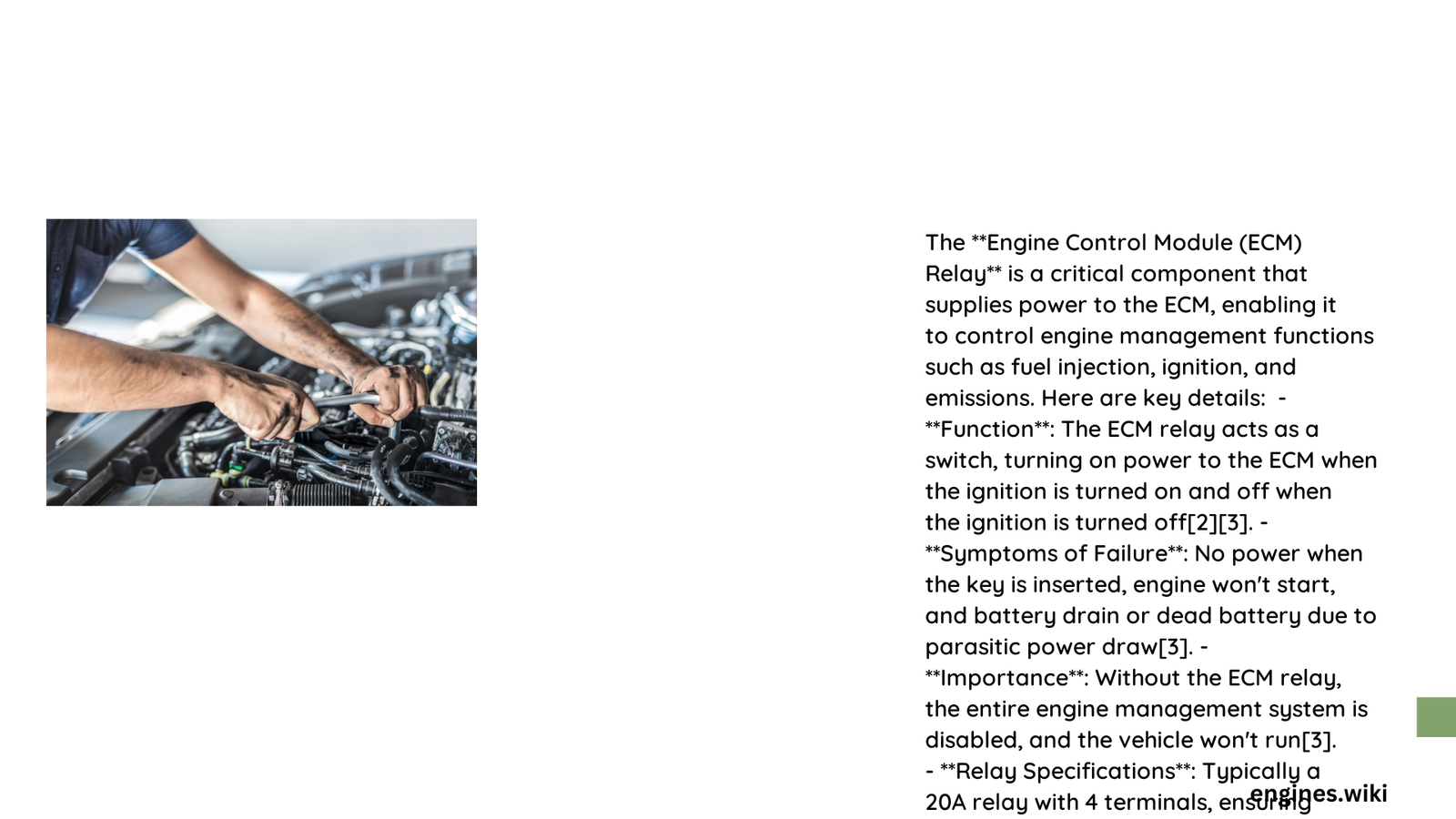The engine control module relay is a critical electrical component that manages power distribution to the vehicle’s engine control module, ensuring precise electrical system functionality. This small yet powerful device acts as a crucial intermediary, controlling voltage supply and protecting sensitive electronic systems from electrical fluctuations and potential damage.
What Exactly is an Engine Control Module Relay?
An engine control module relay serves as an electrical switch that manages power transmission to the vehicle’s engine control module (ECM). Its primary function involves:
- Regulating electrical current flow
- Protecting sensitive electronic components
- Enabling/disabling power to critical engine systems
- Preventing electrical overloads
How Does the Engine Control Module Relay Operate?
The relay operates through an electromagnetic mechanism:
- Activation Trigger: When the vehicle’s electrical system requires ECM power
- Electromagnetic Coil: Generates magnetic field
- Switch Mechanism: Opens/closes electrical contacts
- Power Distribution: Supplies controlled voltage to engine systems
| Component | Function | Typical Specifications |
|---|---|---|
| Coil | Generates Magnetic Field | 12V DC |
| Contacts | Electrical Switching | 30-40 Amperes |
| Switching Speed | Milliseconds | <10 ms |
What Are Common Symptoms of a Failing Engine Control Module Relay?

Vehicle owners might experience several indicators of relay malfunction:
- Intermittent engine starting problems
- Unexpected engine stalling
- Electrical system inconsistencies
- Check Engine Light activation
- Reduced fuel efficiency
How to Diagnose Engine Control Module Relay Issues?
Diagnostic techniques include:
- Visual Inspection
- Check for physical damage
- Examine relay contacts
-
Look for corrosion or burn marks
-
Electrical Testing
- Use multimeter
- Check resistance values
- Verify voltage continuity
- Compare readings with manufacturer specifications
Where is the Engine Control Module Relay Located?
Relay location varies by vehicle make and model:
- Typical Locations:
- Engine compartment fuse box
- Under dashboard
- Near battery
- Integrated relay center
What Tools Are Required for Relay Replacement?
Essential tools include:
- Digital multimeter
- Screwdriver set
- Electrical contact cleaner
- Replacement relay
- Protective gloves
- Safety glasses
How to Replace an Engine Control Module Relay?
Step-by-step replacement process:
- Disconnect vehicle battery
- Locate specific relay
- Remove existing relay
- Verify replacement relay specifications
- Install new relay
- Reconnect battery
- Test electrical system functionality
Cost Considerations
| Replacement Option | Estimated Cost |
|---|---|
| DIY Replacement | $20 – $100 |
| Professional Service | $100 – $250 |
Best Practices for Maintenance
- Regular electrical system inspections
- Keep relay contacts clean
- Address issues promptly
- Use manufacturer-recommended parts
- Avoid aftermarket low-quality replacements
Pro Tip: Always consult vehicle-specific repair manuals for precise guidance tailored to your automobile’s make and model.
Conclusion
Understanding your engine control module relay empowers vehicle owners to maintain optimal electrical system performance and prevent potential mechanical complications.
